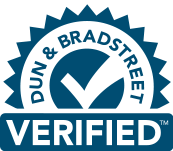For more than 15 years, the partners of DigiVid360 have worked with healthcare clients including medical device companies, medical imaging, and women’s health. Throughout this time, we’ve noticed one challenge that seems inherent to all of these companies… they struggle to compete.
What’s happening out there is that healthcare companies, in general, all seem to share the challenge of just how to highlight their products’ unique features and benefits as they relate to their current and potential customers.
So, if you find yourself battling it out with lots of competitors that are offering similar products, and you’re competing for the same buyer’s attention, including their engagement with your brand, as well the sale of your products/services… keep reading.
Below you’ll find sound advice on how to increase the effectiveness of your marketing:
Top 3 Most Awkward Medical Device Marketing Tactics:
Similarity
Look at 10 competing companies in your space.
Likely, you’ll see a lot of similarities across their websites.
For example, in the spine implant device space, it’s likely you’ll see that they share a common marketing error: their homepage uses the same or similar stock photos, including:
- Picture of the product
- Picture of the Orthopedic Surgeon and/or
- Surgical Team and/or “Happy” patient
This is a problem because they all blend in together and nobody stands out as the clear choice within the segment.
Product Feature Selling
It’s okay to highlight the product features you believe are important to your customers, but it becomes disastrous when this is the primary focus of your marketing message.
With so many companies featuring their “unique” product features, customers are struggling to remember which product features are from which company.
To illustrate this, here are 4 product features for the exact same product, a Cervical Plating System, yet from different competitors:
- Low-Profile Plate Design
- Simple implantation and screw insertion (zero-step or one step)
- Soft-feel instrumentation
- Full range of plate and screw sizes to ensure an anatomical fit with no contouring required
This is a problem because many products have similar features and competitors are touting similar benefits.
Leaving customers confused as to who to believe, wondering which one to choose when they all seem to be the same.
Product Focus vs. Brand Identity
Too much focus on the product with little or no brand identity.
This is despite the fact that we know establishing a solid brand identity helps your customers know what to expect from your company.
This is a problem because the reason a customer may choose your company can be greatly influenced by who you are as a brand, rather than solely what you manufacture.
This is especially true if you are not one of the big known brands.
Differentiation Examples
When Chipotle rolls out a new burrito, most people assume it’s made with high-quality ingredients and classic cooking techniques.
When Virgin America adds a new route to their service, most people assume the flight will feature a wonderful flying experience with mood-lit cabins, leather seats, power outlets and countless entertainment options in the seat.
These brands have already done the work of building a brand identity that people relate to.
Break from the Herd with Brand Storytelling
Medical device companies need to explore brand storytelling as a way to break from the crowded and noisy competitive herd.
Brand stories are not marketing materials and are not ads or sales pitches.
Brand storytelling uses a narrative to connect your company to your customers.
Brand storytelling uses a narrative to connect your company to your customers. It focuses on linking what you stand for with the values you share with your customers.
Over the last few years, storytelling has become a great differentiator with companies large and small across many industries.
One reason brand stories lend themselves so well to highly competitive marketplaces is…
when done right, your competitors can’t copy your brand story because it’s crafted from your Unique Selling Point, which is uniquely yours and yours alone.
If you google “brand storytelling,” you’ll see a ton of variations and slightly different approaches. We’re boiling it down to three easy steps to create your brand story:
Write down your companies past, present and future story.
A great place to start is with its founders and why the company was started. Be as detailed as you can and include interesting facts that might be relatable.
Create a statement that explains why your company exists.
This statement goes by many names like a brand statement, unique selling proposition, and brand positioning statement. The goal is to clarify your unique position in the marketplace.
This is not a mission or value statement.
This statement should focus on what’s important to your customers.
Answer the following questions, “why are we here?” And, “How are we making the world a better place?”
Here are some examples of great brand statements of which a few are from Medical Device companies:
- Integra – Limit Uncertainty. Everything In Medicine Is Uncertain
- St. Jude Medical – More Control. Less Risk. Cardiac Specialist Need Personal Control to Limit Risks
- Powerback – Rehabilitation. Get Home Sooner
- Google – Organize The World’s Information
- TED – Spread Ideas
- Mary Kay – Enrich Women’s Lives
- Tesla – Accelerate the World’s Transition to Sustainable Energy
Use your brand statement to create your brand story.
This will be the story of your company, which should include where you’ve come from and where you are heading.
Good brand stories are true, authentic, and honest.
It should highlight your company’s purpose.
This will engage your audience and invite them to be a part of where your company is headed.
Once you have your brand story, you need to tell that story to prospective customers through your marketing messages, videos, social media posts, blog posts, and advertisements.
Remember, your brand story is what you stand for at the core of your company strategy.
This should do more than guide marketing activities but should also get your team aligned and excited about your company’s purpose.
If you would like help discovering your brand story and learn how to use it to break away from the competition, contact us.






